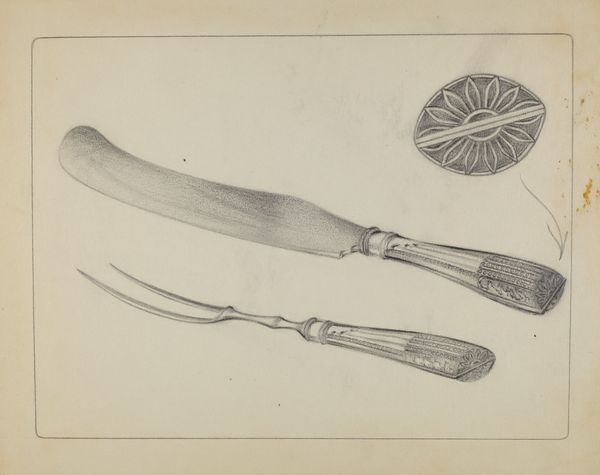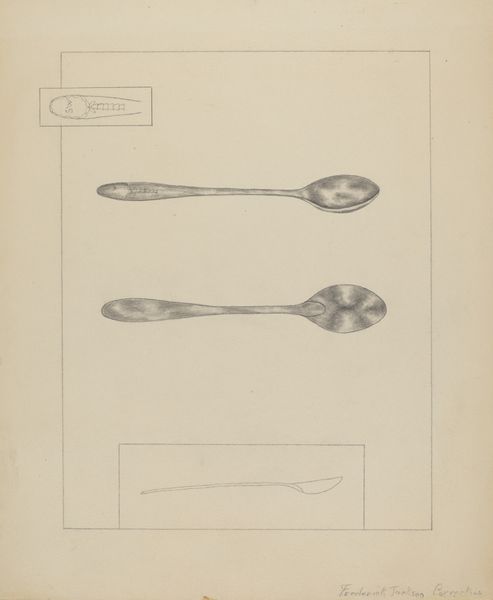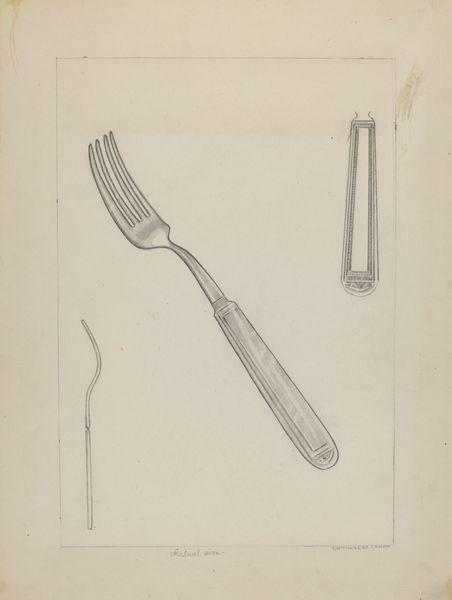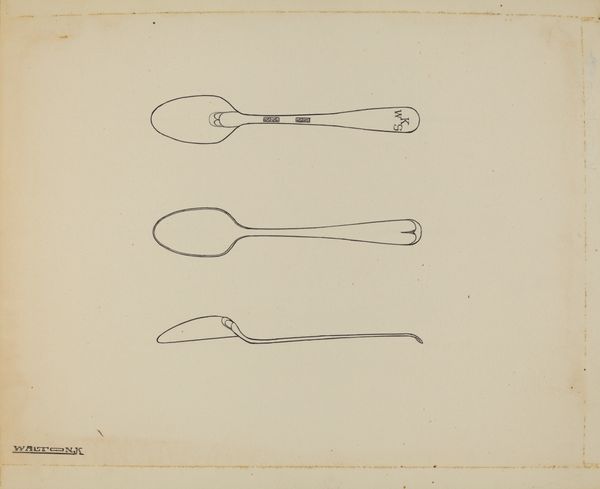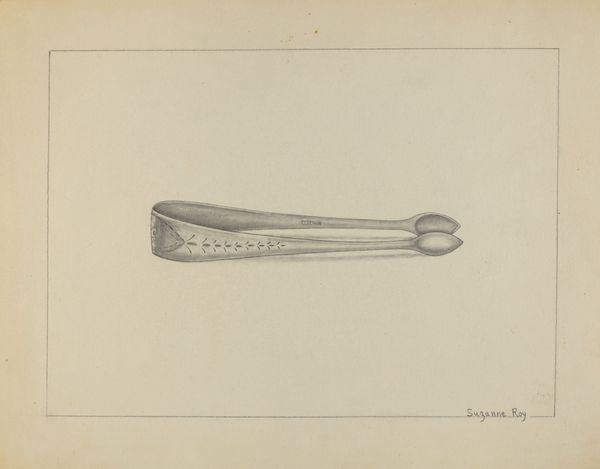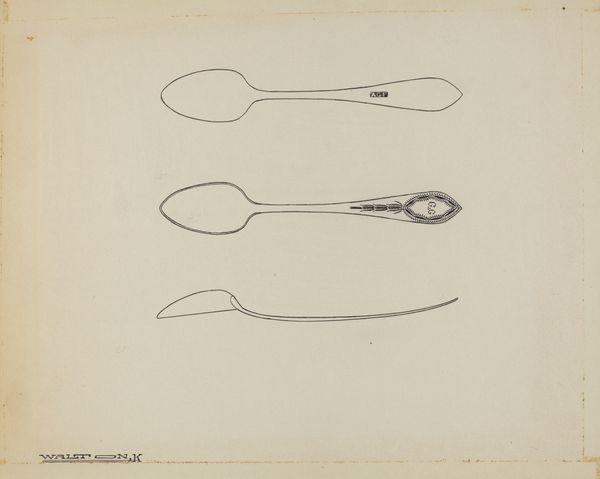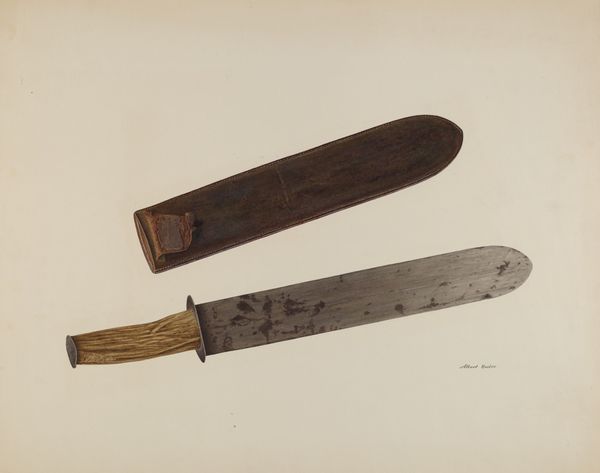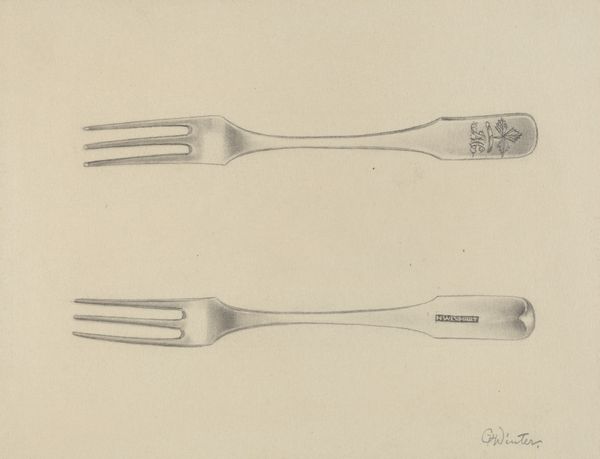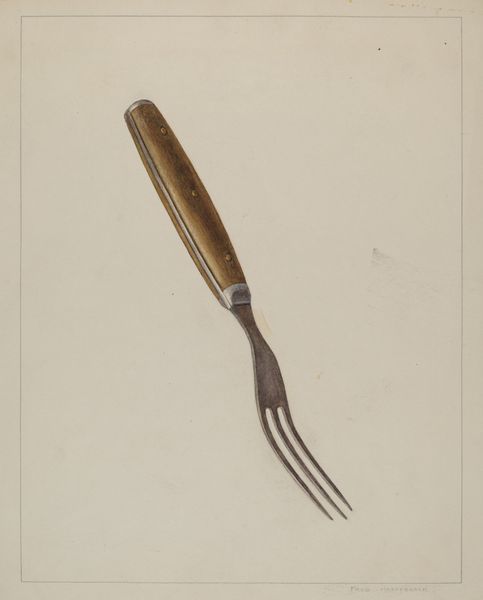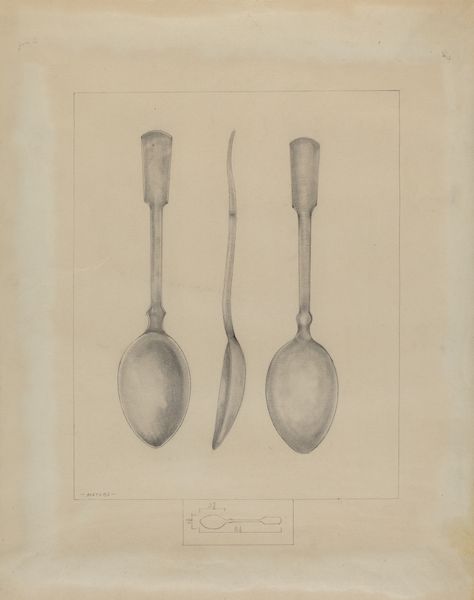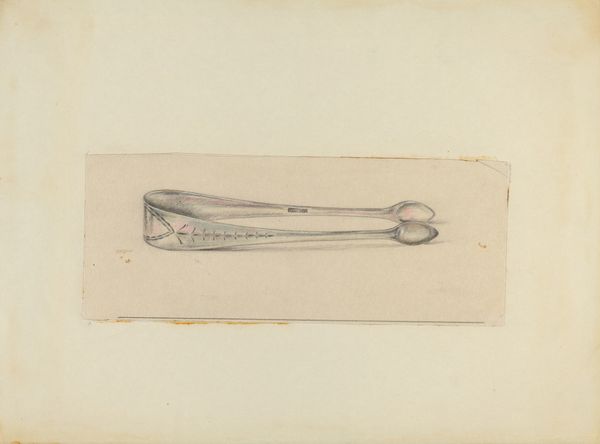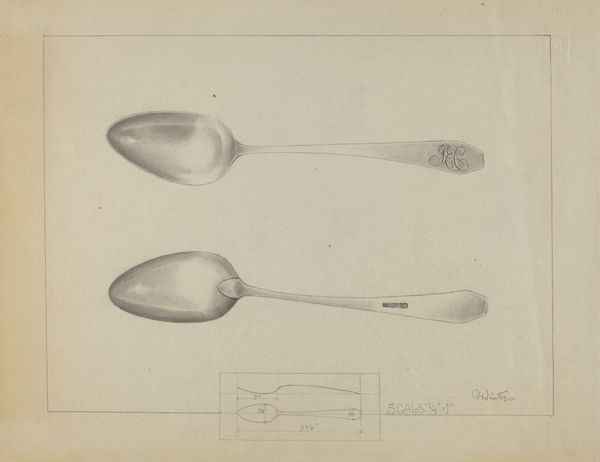
drawing, silver, pencil
#
pencil drawn
#
drawing
#
silver
#
pencil drawing
#
geometric
#
pencil
#
line
Dimensions: overall: 12.4 x 17.6 cm (4 7/8 x 6 15/16 in.) Original IAD Object: 8 1/2" long; 3/4" wide
Copyright: National Gallery of Art: CC0 1.0
Curator: "Silver Knife," a drawing in pencil and possibly silverpoint by Charlotte Winter, around 1936. What do you notice first? Editor: It's deceptively simple. I mean, the composition and tone are quiet, muted, almost ghostly, but the draftsmanship is incredibly precise. A real exercise in rendering form. Curator: Indeed. The almost clinical representation removes any sense of overt value. Given Winter's socio-political consciousness, what is the work communicating? It does after all focus on cutlery. Who owned these knives, and what was the cultural context of silver in the mid-1930s? Were they family heirlooms memorialised during economic instability? Editor: Possibly. I'm more struck by the subtle light play—the metallic sheen implied through delicate gradations of pencil. Note the careful delineation of each facet of the handles, the curvature of the blades—there is a strong geometric quality about it that interests me. The parallel lines create rhythm, and invite the eye to track along the metallic surfaces. Curator: And within the inter-war period in which it was produced, the restrained nature is also interesting. Consumption habits had undergone profound alterations. Such material, as depicted in Charlotte Winter's piece, can tell us so much about social strata. We might then see it in dialogue with the domestic realities facing ordinary Britons. Editor: Undoubtedly. It's tempting to dive down sociological routes and contextual possibilities, but its quiet refinement and precise mark making is an important quality of the artwork. Curator: It asks us, then, to reconsider the narrative power in the everyday, and the economic landscape reflected even in a silver knife. Editor: Yes, to explore this artwork beyond the surface requires considering Winter's refined draftsmanship, use of composition, and a bit of close seeing.
Comments
No comments
Be the first to comment and join the conversation on the ultimate creative platform.
